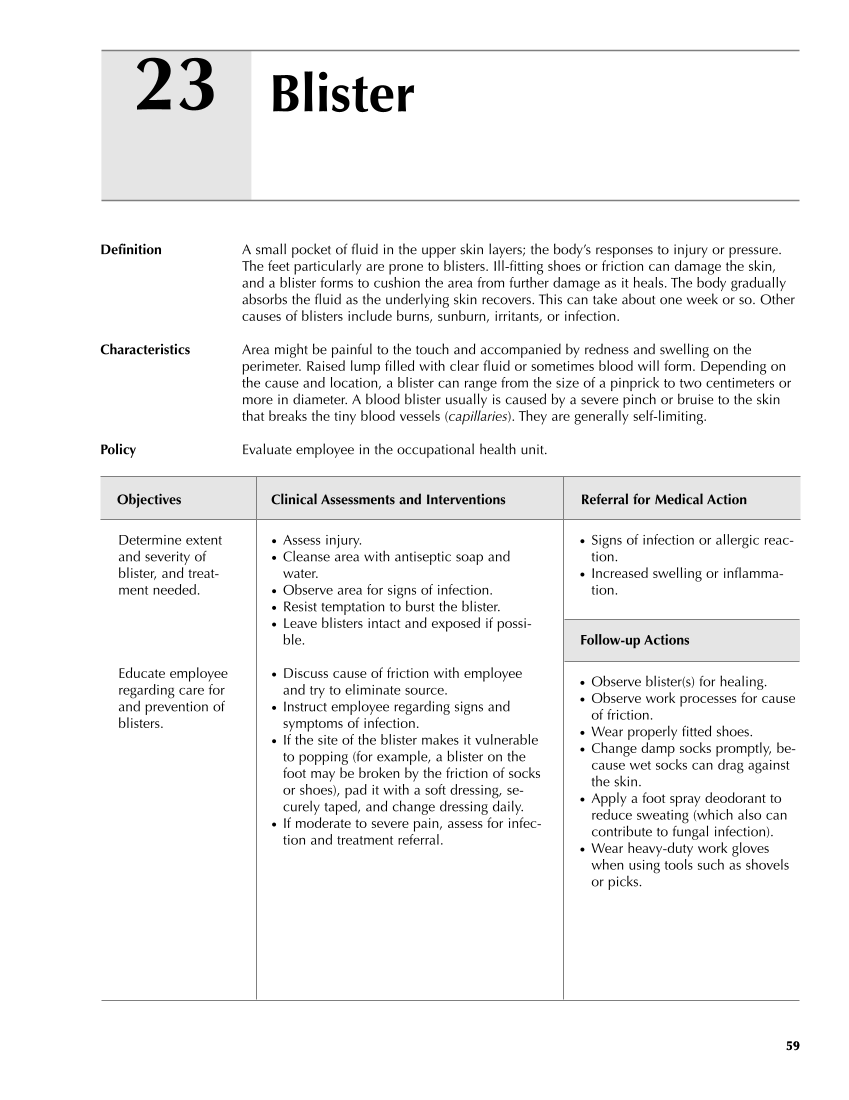59 Blister 23 Definition A small pocket of fluid in the upper skin layers the body’s responses to injury or pressure. The feet particularly are prone to blisters. Ill-fitting shoes or friction can damage the skin, and a blister forms to cushion the area from further damage as it heals. The body gradually absorbs the fluid as the underlying skin recovers. This can take about one week or so. Other causes of blisters include burns, sunburn, irritants, or infection. Characteristics Area might be painful to the touch and accompanied by redness and swelling on the perimeter. Raised lump filled with clear fluid or sometimes blood will form. Depending on the cause and location, a blister can range from the size of a pinprick to two centimeters or more in diameter. A blood blister usually is caused by a severe pinch or bruise to the skin that breaks the tiny blood vessels (capillaries). They are generally self-limiting. Policy Evaluate employee in the occupational health unit. Objectives Clinical Assessments and Interventions Referral for Medical Action ● Signs of infection or allergic reac- tion. ● Increased swelling or inflamma- tion. Follow-up Actions ● Observe blister(s) for healing. ● Observe work processes for cause of friction. ● Wear properly fitted shoes. ● Change damp socks promptly, be- cause wet socks can drag against the skin. ● Apply a foot spray deodorant to reduce sweating (which also can contribute to fungal infection). ● Wear heavy-duty work gloves when using tools such as shovels or picks. Determine extent and severity of blister, and treat- ment needed. Educate employee regarding care for and prevention of blisters. ● Assess injury. ● Cleanse area with antiseptic soap and water. ● Observe area for signs of infection. ● Resist temptation to burst the blister. ● Leave blisters intact and exposed if possi- ble. ● Discuss cause of friction with employee and try to eliminate source. ● Instruct employee regarding signs and symptoms of infection. ● If the site of the blister makes it vulnerable to popping (for example, a blister on the foot may be broken by the friction of socks or shoes), pad it with a soft dressing, se- curely taped, and change dressing daily. ● If moderate to severe pain, assess for infec- tion and treatment referral. Guideline continues on next page 59
Purchased from OEM Press by (ge corporate access). (C) 2013 OEM Health Information, Inc. All rights reserved.












































































































































































































































































































































































































































